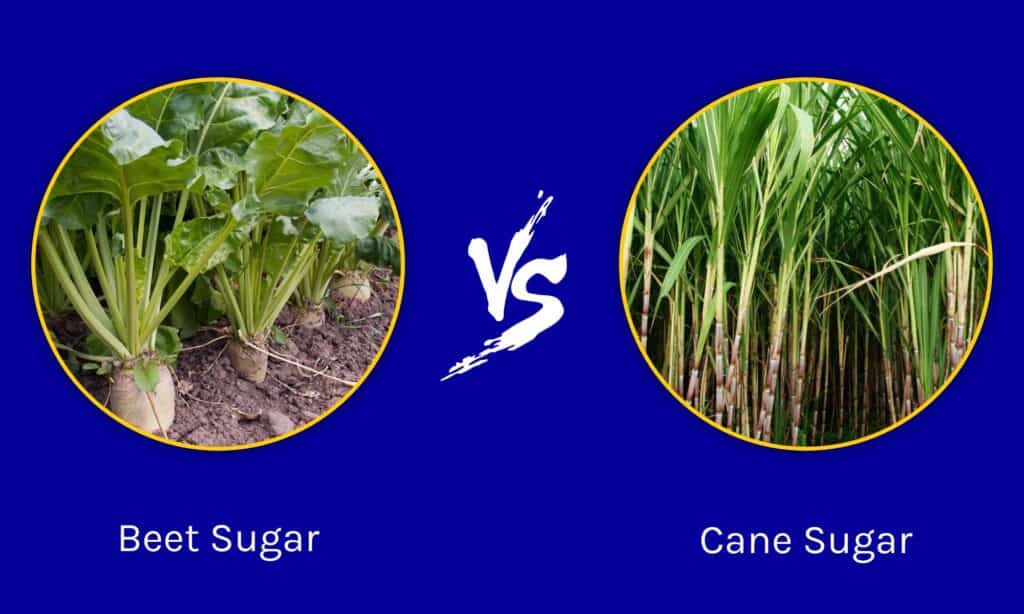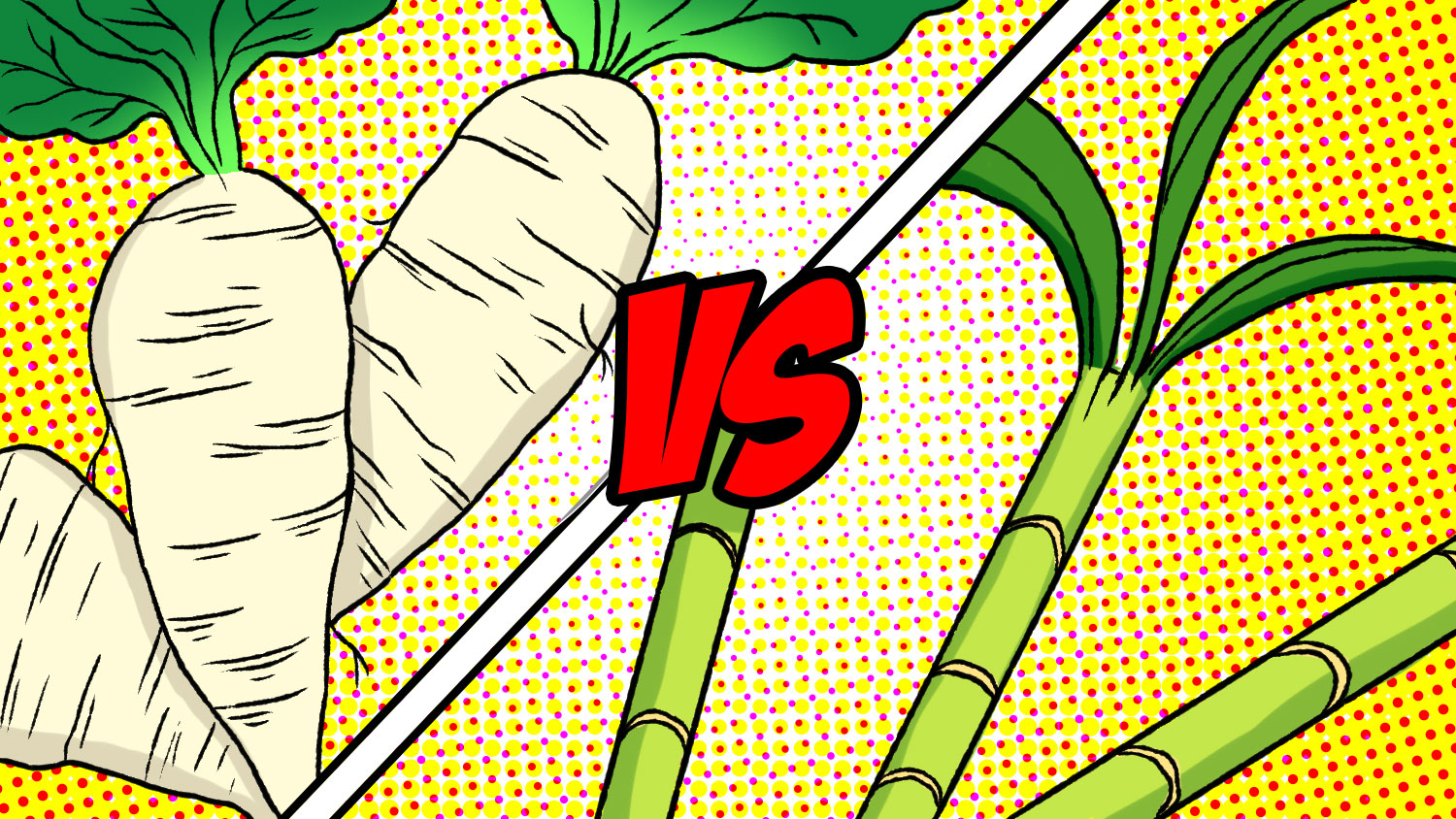All You Need to Find Out About Sugar Beet Vs Sugar Cane: Insights Into Their Duties in the Cane Sugar Industry
The sugar industry depends greatly on both sugar beet and sugar cane, each offering special advantages and difficulties. Comprehending their farming approaches, geographical distribution, and dietary influences reveals substantial differences. As consumer preferences change, the industry encounters pushing needs for sustainability and innovation. Checking out these elements can offer deeper insights right into the future of sugar and their functions in the international market. What advancements lie in advance for these crucial plants?
Introduction of Sugar Beet and Sugar Cane
Sugar beet and sugar cane are 2 main resources of sucrose, each with one-of-a-kind qualities and cultivation methods. Sugar beet, an origin veggie, flourishes in temperate environments and is typically expanded in regions with cooler temperature levels. It has a high sugar material, normally about 16 to 20 percent, which is removed via a process of slicing and diffusion. On the other hand, sugar cane is an exotic yard that prospers in warm, damp climates. Its stalks can consist of 10 to 15 percent sucrose, and the extraction process generally entails crushing the stalks to release the juice.Both plants play significant duties in the worldwide sugar market, with sugar beet primarily grown in Europe and The United States And Canada, while sugar cane is primarily grown in countries like Brazil, India, and China. Sugar beet vs sugar cane. This geographical distribution mirrors the different weather demands and farming techniques matched to every plant, affecting their corresponding payments to sugar production worldwide
Farming Techniques and Growing Conditions
The farming techniques and expanding problems for sugar beets and sugar cane vary considerably because of their unique dirt and environment requirements. Sugar beetroots grow in cooler climates with well-drained, abundant dirts, while sugar cane chooses warmer temperature levels and can tolerate poorer dirts. On top of that, the harvesting methods for both crops vary, showing their unique expanding techniques and environmental adjustments.
Dirt Requirements Comparison
While both sugar beet and sugar cane are crucial sources of sugar, their dirt needs show distinctive choices that affect cultivation approaches and growing problems. Sugar beetroots prosper in well-drained, loamy soils abundant in natural matter, with a pH variety of 6.0 to 8.0. This sort of soil supports their deep taproots, allowing vitamins and mineral absorption. Alternatively, sugar cane chooses fertile, sandy loam or clay dirts that keep dampness, preferably with a pH in between 6.0 and 7.5. The origin system of sugar cane is much more extensive, calling for soil that can sustain its development in an extra water-retentive atmosphere. These differing soil requirements require tailored agricultural practices to optimize yields for each and every crop, stressing the relevance of soil monitoring in their cultivation.
Environment Versatility Distinctions

Harvesting Methods Review
Collecting techniques for sugar beet and sugar cane vary considerably because of their unique growing approaches and expanding problems. Sugar beet is commonly harvested mechanically utilizing specialized tools that roots out the plants and separates the origins from the vegetation. This process is normally conducted in cooler months to stop wasting. On the other hand, sugar cane harvesting often involves manual work or mechanical cutters, where stalks are cut short. This strategy is performed throughout the dry season to decrease the dampness content, which can affect sugar return. In addition, the timing of the harvest is important, as both plants require to be gathered when they reach peak sugar concentration for effective handling.
Geographical Circulation and Production Statistics
Although both sugar beet and sugar cane serve as crucial resources of sucrose, their geographic distribution and production data reveal notable distinctions. Sugar cane primarily flourishes in exotic and subtropical climates, with major manufacturing areas including Brazil, India, China, and Thailand. In comparison, sugar beet is mainly cultivated in temperate regions, with leading manufacturers situated in Europe, the United States, and Russia.According to current data, global sugar cane production substantially surpasses that of sugar beet. In 2021, sugar cane made up about 79% of total sugar manufacturing worldwide, while sugar beet contributed around 21%. Brazil continues to be the world's largest sugar producer, mainly from sugar cane, creating over 38 million statistics lots yearly. The United States is one of the top sugar beet producers, yielding regarding 5 million metric tons each year. These statistics highlight the necessary duty each crop plays in the global sugar sector

Nutritional Distinctions and Health And Wellness Impacts
The dietary structure of sugar beet and sugar cane differs substantially, affecting their corresponding health and wellness effects. Sugar beet has a tendency to have higher degrees of particular nutrients, while sugar cane offers a different set of nutrients. Recognizing these differences is vital for examining their effects on health and dietary see this selections.
Nutrient Composition Comparison
When comparing the nutrient structure of sugar beet and sugar cane, significant distinctions arise that can influence health results. Sugar beets are recognized to supply a higher focus of essential nutrients, including vitamins B6 and C, potassium, and magnesium. In comparison, sugar cane has a tendency to have reduced degrees of these nutrients, mainly working as a carb resource. Sugar beetroots also contain dietary fiber, which is helpful for digestive system health, while sugar cane lacks this component. Furthermore, the visibility of antioxidants in sugar beets contributes to possible health and wellness advantages, unlike sugar cane, which is mostly made up of sucrose. These distinctions highlight the differing dietary accounts of both resources, which might affect consumer choices and nutritional considerations.

Health And Wellness Impacts Review
While both sugar beet and sugar cane are widely utilized for sugar production, their distinct nutritional profiles cause differing health and wellness results. Sugar beet normally includes higher levels of minerals and vitamins, such as potassium and magnesium, adding to far better general nutritional worth. Conversely, sugar cane's juice is rich in anti-oxidants, which might use added health benefits.However, both sources primarily produce sucrose, which, when eaten over, positions dangers such as weight problems, diabetes, and cardiovascular disease. The glycemic index of sugar cane is typically slightly lower than that of sugar beet, potentially making it a much better option for blood sugar level monitoring. Inevitably, moderation is essential for both types to alleviate unfavorable wellness effects linked with high sugar intake.
Ecological Considerations in Sugar Production
Sugar manufacturing from both sugar beet and sugar cane uses financial advantages, it also elevates considerable environmental concerns. The farming of these plants usually entails substantial land usage, which can bring about environment damage and loss of biodiversity. Additionally, the use of fertilizers and pesticides in sugar farming adds to soil destruction and water pollution, influencing regional ecosystems.The high water usage required for watering, particularly in sugar cane manufacturing, intensifies water deficiency issues in some regions. In addition, logging for expanding sugar cane plantations has been connected to boosted greenhouse gas discharges, additionally adding to climate change.Sustainable farming practices, such as crop rotation and natural farming, are vital to mitigate these environmental influences. Sector stakeholders are progressively recognizing the need for accountable cultivation methods to guarantee the long-lasting practicality of sugar production while reducing harm to the world.
Economic Value in the Global Market
The ecological difficulties related to sugar manufacturing underscore the requirement to examine its financial relevance in the global market. Sugar beet and sugar cane are essential to the farming economic climate, adding considerably to the resources of millions worldwide. In 2022, the worldwide sugar market was valued at roughly $50 billion, with sugar cane accountancy for the bulk of production. Countries such as Brazil, India, and China are leading manufacturers, influencing global supply chains and rates frameworks. The competitors in between sugar beet and sugar cane additionally impacts local economic situations, as farmers choose plants based on market needs and climatic conditions. Furthermore, the sugar industry sustains ancillary industries, including food processing and biofuel manufacturing, enhancing its overall economic impact. As consumer choices change towards healthier options, the financial dynamics of sugar production might progress, necessitating ongoing evaluation of its market significance in a transforming worldwide landscape.
Future Trends and Advancements in Sugar Production
As the global need for sugar remains to develop, technologies in sugar production are arising to deal with sustainability and effectiveness obstacles. One remarkable pattern is the boosted adoption of precision farming modern technologies, which enable farmers to optimize yields while reducing ecological influences. Additionally, advancements in reproducing methods, such as CRISPR genetics editing, are being explored to establish sugar plants with boosted resistance to insects and diseases, thus decreasing the need for chemical inputs.Moreover, the assimilation of sustainable power resources in sugar processing plants is gaining grip, assisting to reduced carbon impacts. The pattern in the direction of bioprocessing is likewise significant, as firms seek look at these guys to transform spin-offs right into value-added items like biofuels and bioplastics. Finally, customer choices are shifting towards all-natural sugar, triggering research study right into alternate sources like stevia and monk fruit, which may improve the landscape of the sugar market in go the coming years.
Regularly Asked Concerns
Just How Do Sugar Beet and Sugar Cane Taste Differently?
Sugar beet and sugar cane show distinctive flavor profiles. Sugar beet tends to have a somewhat natural sweetness, while sugar cane provides a much more durable, syrupy sweet taste, contributing to their distinct cooking applications and choices amongst consumers.
Can Sugar Beet and Sugar Cane Be Made Use Of Interchangeably in Recipes?
Sugar beet and sugar cane can be used mutually in dishes, though their flavors and sweet taste levels may vary a little. Modifications could be required to accomplish the wanted preference and texture in culinary applications.
What Are the By-Products of Sugar Beet and Sugar Cane Processing?
The spin-offs of sugar beet and sugar cane handling consist of molasses, bagasse, and pulp (Sugar beet vs sugar cane). These products are utilized in animal feed, biofuel manufacturing, and various industrial applications, enhancing sustainability and minimizing waste in the sugar industry
Exist Any Alternate Uses for Sugar Beet Besides Sugar Production?
The alternate uses for sugar beet prolong past sugar production. They include livestock feed, biofuel manufacturing, and the removal of plant-based chemicals, showcasing sugar beet's adaptability within agricultural and industrial applications.
Exactly How Does Climate Change Affect Sugar Beet and Sugar Cane Crops?
Environment adjustment influences sugar beet and sugar cane crops by modifying temperature and precipitation patterns. Raised heat stress, drought, and moving pest populaces can lower returns, challenging farmers to adjust their practices for lasting production.